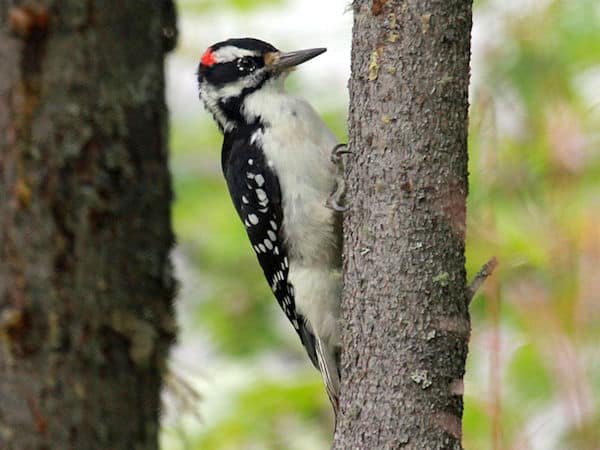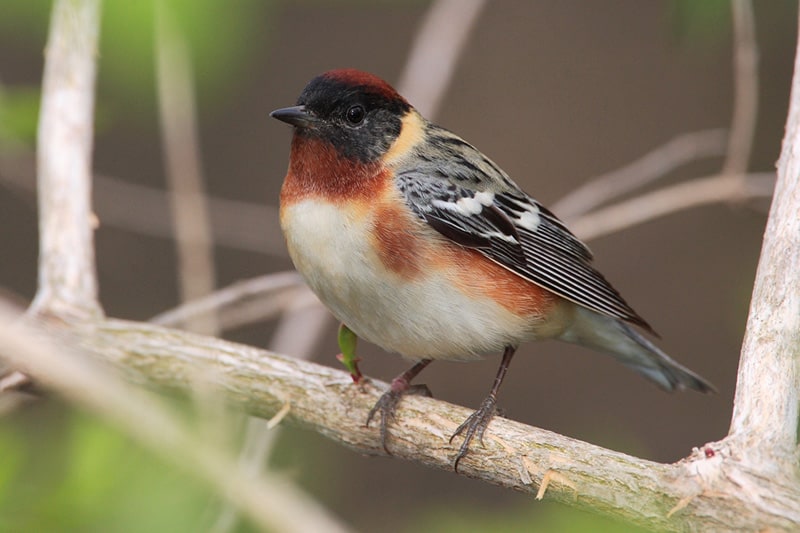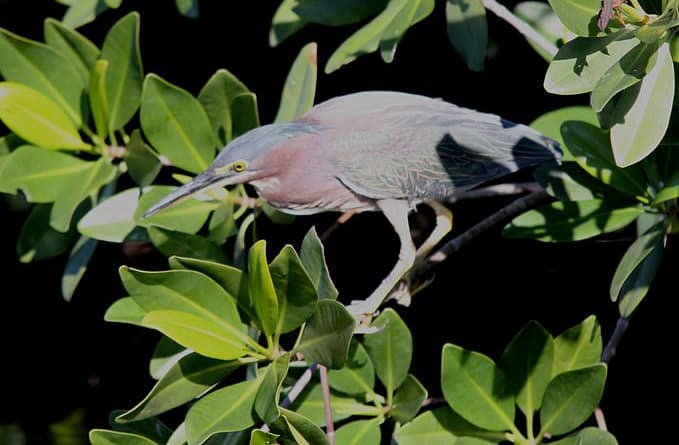A familiar visitor to bird feeders, the hairy woodpecker is named for the long, hair-like white feathers on its back. The hairy looks like a super-sized version of a downy woodpecker, but the best way to tell these two similar species apart is to compare the length of the bill to the length (front-to-back) of the head.
The hairy’s bill is always longer than the width of its head, and the downy’s bill is always shorter than the length of its head. An easier way to remember is: Downy is dinky; hairy is huge. Hairy woodpeckers are medium-sized woodpeckers (9 ¼ inches long) with a long, sturdy, chisel-like bill that is used for finding food, for excavating nest holes, and for territorial drumming on hollow trees.
Males and females look the same with white bellies, a white central back stripe, and distinctly patterned black and white on faces and wings. Adult males, however, have a red patch at the back of the head.
Listen for
Hairy woodpeckers even sound bigger than downies. Their call note, peek!, is sharper and louder than the downy’s, and the hairy’s rattle is lower and more emphatic and does not drop in pitch. They also drum on hollow branches.
Find it
Hairy woodpeckers are year-round residents across North America in mature forests and wherever there are large trees, including suburban backyards, urban parks, and isolated wood-lots. They are one of our most widespread woodpeckers with a range extending into Central America.
Feeding Behavior
Using their bill, hairy woodpeckers can glean insects from tree bark or excavate them from beneath the bark’s surface. Primary diet items include beetles, spiders, moth larvae, and ants, as well as fruits, seeds, and nuts. At bird feeders, hairies readily eat sunflower seeds, peanuts, suet, and cracked corn.
Nesting Behavior
It can take up to three weeks for a pair of hairy woodpeckers to excavate their nest cavity in the trunk or dead branch of a living tree. When completed, the nest cavity will have a 2-inch entry hole and will be 4 inches wide and as deep as 16 inches. Into this cozy space, four eggs are laid, and both parents share the roughly two-week incubation period.
Less than a month after hatching, young hairies are ready to fledge from the nest, though the parents tend them for several more weeks. A new nest is excavated each spring, but old cavities are used for roosting at night and in winter.
WOW!
Some woodpeckers attack house siding. They may be able to hear wood-boring insects inside a tree trunk but mistake the hum of electricity in household wiring for insect activity.
Listen to a hairy woodpecker:





Had a pair at the feeder this morning.
Beautiful birds.
These are the types of little Woodpeckers that I have in my yard that I feed and love to watch. I have pics of them all in my camera. They are all so Beautiful in there own way. Some are just so Pretty to watch, and others are very comical to watch them play and fly around and I Love to even watch mates Kiss each Other. I’ts a Beautiful Thing to watch. When they are. Chasing each Other around the tree. And Being Playful.